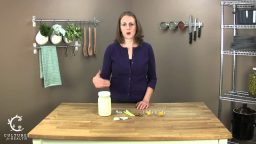Green tea is much more than the complimentary beverage offered at Chinese food restaurants! Whether you love or hate the taste, it’s worth knowing about its amazing health benefits.
Green tea has been used for centuries in China and throughout Asia to treat a number of maladies and diseases, everything from regulating blood pressure to killing cancer cells.
It is a wonderful natural supplement to take because it’s list of benefits is long, but it’s also quite affordable. You can get a month’s worth of green tea for a few dollars! That sure beats a lot of other expensive herbal supplements.
If you don’t like the taste of green tea, there are many ways you can take it. Its taste is certainly not sweet on its own, but it’s easy to mask by infusing with sweet fruit flavors or simply squeezing some lemon juice in it. Iced green tea has a considerably more muted flavor than hot green tea, so keeping a pitcher iced in your fridge with some lemons cut up in it can be a much more tasty drink that a hot cup of green tea.
If you’re still not sold, consider these health benefits before dismissing the idea entirely:
Increased Metabolism
Green tea is a wonderful and natural weight loss supplement, and far better for you than the unnatural, unhealthy, synthetic products on the market. It contains valuable polyphenol, which intensifies levels of fat oxidation and can help boost the rate at which your body burns calories. Not to mention, it’s a zero-calorie drink, making it a great replacement for diet sodas or coffee.
Regulate Blood Sugar
Green tea has been shown to regulate glucose levels in your blood, which helps regulate overall blood sugar. This makes it a great option for diabetics and again, assist with weight loss.
Heart Health
Some scientists believe that green tea assists in the healthy function of blood vessels, keeping them relaxed and better prepared to handle changing blood pressure. This means a healthier heart. Green tea can also prevent the formation of blood clots, which are the main cause of sudden heart attack.
The Lost Book of Remedies…In times of crisis, this book will probably end up saving many American lives>>>
Lowered Cholesterol
You may be aware by now that there is “good” and “bad” cholesterol in the body, and that it is important to have a proper ratio between the two. Well, you guessed it, green tea can help with this! It helps reduce the bad stuff and keep good cholesterol in proper balance.
Dental Health
Some studies have shown that “catchin”, a property in green tea, actually kills the bacteria that contributes to tooth decay and poor gum health.
Blood Pressure
Frequent consumption of green tea has long been linked to regulated, healthy blood pressure.
Anti-Viral/Anti-Bacterial/Anti-Fungal
On top of all these great benefits, green tea can also actually kill harmful viruses, bacteria, and fungi in your system. This mean it can help with everything from the common cold, to candida yeast overgrowth, to cancer. Many studies have shown it essentially stops cancer or disease dead in its tracks. If you’re not convinced that you should regularly consume green tea already, I don’t know what will!
Beauty
OK, so maybe your vanity is my last chance to convince you how great green tea is. If all the health benefits don’t phase you, perhaps green tea’s amazing ability to ease wrinkles and slow aging will. Green tea is incredibly antioxidant and anti-inflammatory, and studies consistently show it improves skin, reduces the effects of sun damage, and tones and clears complexion.








